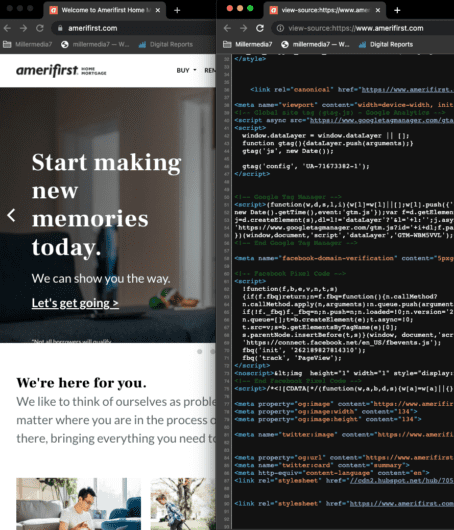A product strategy can drastically improve the focus, quality, and growth of any company. Yet, how many companies have you worked in that have a clear understanding of their company’s vision and how they hope to achieve it?
How many have a clear framework to actually define and prioritize what they work on? How many people in your team would be able to tell you exactly what they are doing, why, and how it ties into their team and company objectives?
In my experience, very few.
Which, when you think about, is completely mad.
We spend our time rushing around, stressed, running from meeting to meeting, but use most of that time working on things that don’t even matter.
If we don’t understand why we are doing something and whether it ties into our team and company objectives, it’s very likely to be completely irrelevant.
We spend our time busying ourselves with things that simply don’t matter, at the expense of the things that really do matter.
And, ultimately, as we fail to work on things that really do matter, instead of faffing around wasting our limited resources on a smorgasbord of disparate, low impact tasks, we lead our companies towards inevitable failure.
Without a strategy – without a clear direction to move our team in – we will remain in this trap until the money or patience or perseverance runs out.
Strategy: Not Just a Corporate Buzzword
“Strategy is a set of principles and decisions — informed by reality (e.g. market forces, laws of physics, data) and caveated with assumptions — that you commit to ahead of development to ensure the greatest likelihood of success in achieving your vision. Your strategy may evolve with the introduction of new data. If there’s a big shift in strategy while the mission and vision remain constant, it’s called a pivot.” — Vince Law, Hackernoon
Like the words “synergy” and “innovation”, “strategy” has been so over-used in corporate-consultancy parlance and under-used in practice that it has, to a large extent, lost the importance it should be rightfully assigned as a concept in modern parlance.
But strategy – and specifically in this context, product strategy – is an essential tool for success in your company.
A product strategy provides you with an effective, antidote to the chaotic, diffuse, low-impact efforts of your product development and design team.
It provides a framework for decision-making to guide and focus the efforts of your team on the process of creating and achieving a specific, high-priority objective for your business. Such a framework will help you achieve far greater results because:
1. Dealing with limited resources
As a startup (or any company for that matter), we have limited resources. When we focus our limited time on lots of low-priority tasks, therefore, we tend to have a low impact on our business objectives, such as increasing revenue. By clearly defining one priority – and communicating this clearly with your team – all of the team’s efforts can then be focused on achieving that priority.
2. A product strategy drives innovation
With a product strategy, those closest to the product and customer can more confidently experiment with what they consider the best ideas to achieve the team’s strategic goal. This is because they have a greater understanding of the end goal and can improve the product design and meet the target market expectations more clearly. In fact, research shows this will place your company with 75-85% more profit after a few years in business compared to your less-innovative competitors.
3. A strategy provides your team with autonomy.
As your design team or user researchers develop a product roadmap, they work out their own ways to achieve the team’s strategic goal. This leads to a more motivated team, a happier team, and a faster-moving team.
4. Accountability and focus-driven activities
Finally, by focusing our efforts on one specific metric, everyone in the team is held accountable for their work. Rather than the CEO, with a vision of the product, simply requesting a feature to be built and never stopping to review the results, you have a much more target customer dedicated approach to both user experience and product design.
When defining a product strategy, the team is pushed to define a specific metric for success or failure. As a result, each product iteration and a new feature is measured in relation to that key metric and judged accordingly. Either it improves or has no impact or, as is often the case, it actually had a negative impact on that metric.
Effective product strategy example
Say we are Uber and our big-picture strategy is to help a customer book an Uber within 10 seconds of opening the mobile app. After all, we know that the faster a customer books, the more revenue we generate from them.
Within such a framework, the entire product design process is influenced. It is very easy for our team to come up with ideas and design decisions in relation to this strategic goal.
Do we believe a feature help a customer book a taxi within 10 seconds? If not, we don’t work on it. If we do, we proceed.
Instead, because each feature idea is based on assumption until it is proven to deliver results, we must in fact measure the success – or failure – of each idea we work on to understand whether it has actually helped us move closer to achieving our strategic product goal (in this case, helping a customer book an Uber within 10 seconds).
Product management and measuring results
As each team has the freedom to work autonomously and innovate, our team becomes faster at defining what to build, measuring success or failure, and learning from the results to build something better in the next iteration. Simultaneously, it lessens the burden on micro product management.
So, instead of some high-level company executive telling you to “build this feature” or “create these types of products”, failing to even bother looking at the outcome and simply repeating the cycle in the blind hope that something will stick, we actually learn how to deliver features and products that are optimized to deliver value, but that are optimized to deliver maximal value to a priority area of your business (usually an increase in revenue in some form).
How To Implement a Product Strategy
Unfortunately, simply defining what it is we believe we should focus on as a team does not, as you may imagine, necessary mean that suddenly everything clicks into place and our team will start delivering high-impact work the very next day.
It will, however, form a catalyst for change that should gradually mean everything else clicks into place.
1. Understanding the business goals
To understand our business goals, we need to understand what our mission is as a business and how, broadly speaking, we envisage that mission being achieved (our company vision).
Going back to the Uber example, if our mission is to help people get from A to B as quickly and easily as possible, a strategy to help customers book an Uber taxi within 10 seconds will help us move towards achieving that vision.
Our strategy, in such a framework, can be viewed as a carefully considered assumption as to what our next best step could be to move us nearer to achieving our vision. It is the direction we take in order to get closer to the destination.
Within a product team, in a small startup, aligning our strategy with our company vision requires sitting down with the CEO and other key stakeholders (this would be done with a CPO, who aligns the different product teams with business goals, in a larger organization) to understand what the main business goal is for the upcoming months, then agreeing on a strategy to pursue to help the company achieve that business goal.
The product strategy itself should come from an existing analysis of our existing data. This should yield insights on, for example, what drives retention and revenue within our product (this mapping of how customers interact with your product is a prerequisite of understanding whether your strategy is in fact working or not, as you measure the impact of each product change you make).
Using the example of Uber again, say our business goal is to increase revenue from first-time customers, our strategy could be to reduce the time it takes from downloading the app to booking your first Uber ride from 2 minutes to 20 seconds.
2. Defining our current challenge
Once we have aligned with key stakeholders, as the product lead, we need to ensure that we are able to clearly define the problem and communicate the core strategy with our team.
Within a product team, in a small startup, aligning our strategy with our company vision requires sitting down with the CEO and other key stakeholders (this would be done with a CPO, who aligns the different product teams with business goals, in a larger organization) to understand what the main business goal is for the upcoming months, then agreeing on a strategy to pursue to help the company achieve that business goal.
This not only avoids misalignment around the term “strategy”, but also puts the emphasis on the team to solve a specific problem, stressing autonomy and innovation (both important tools in building successful products).
Although the challenge itself is fixed by management, how the team aims to actually succeed is entirely up to their creativity, deep knowledge of the product, and willingness to iterate rapidly until they discover something that works.
3. Executing our current challenge
In order to overcome our current challenge, we don’t simply start working on any and every idea we have in a mad panic.
Instead, now that we have a very clear, concrete metric to effect, such as reducing the time for a new user to book an Uber from 30 to 10 seconds, we need to know how every product change will impact this key metric.
Rather than just building it and then worrying about understanding the result afterward, we use the following steps:
(a) Analyze the data we currently have from our product.
This could involve looking at the analytics data of how customers are using our product, or reading over user interviews and usability test reports to discover any insights that will help inform our decisions moving forward, such as identifying the main barriers for a customer using our product at present
(b) Define a potential solution to the main obstacle preventing us from achieving our challenge.
This potential solution needs to be based on what we currently assume – based on intuition and the existing data we have on our customers – will most effectively help us achieve our current challenge. It also needs to set a specific expected outcome for that product change in order to understand whether it did help us move closer to achieving our challenge or not.
(c) Measure the results.
Once we have implemented our product changes we must measure the results in order to see whether the actual outcome was as expected (did it help us achieve our challenge? If so, why? If not, why not?).
(d) Learn from our previous experiment
In order to have a better understanding of what we work on next, based on a now deeper understanding of our customers and how they interact with our product, and repeat the process until we achieve what we set out as our current challenge we must learn from previous experiments.
In practice, we can use the following template to define our current challenge, as well as manage the iterative process outlined above to help us achieve that challenge (Section 3 of my new book, Why Your Startup is Failing, offers a more detailed breakdown of how to implement this process):

Doing Impactful Work
Once we are focused – and focused on the right thing – you will immediately see your team have far greater impact with their work.
Instead of spread, disparate efforts going in 10 different directions, we go in one direction.
Instead of low impact efforts half-heartedly trying a few things out, we try one thing out and see whether it works.
Don’t expect an immediate impact on your growth or revenue, however.
A process that requires a learning mindset, requires us at times to pause and analyze where we are at, or to try something that may not work. But when we learn, we understand our product and our customers better.
The result? Success is inevitable if we keep building, measuring and learning from the results.














